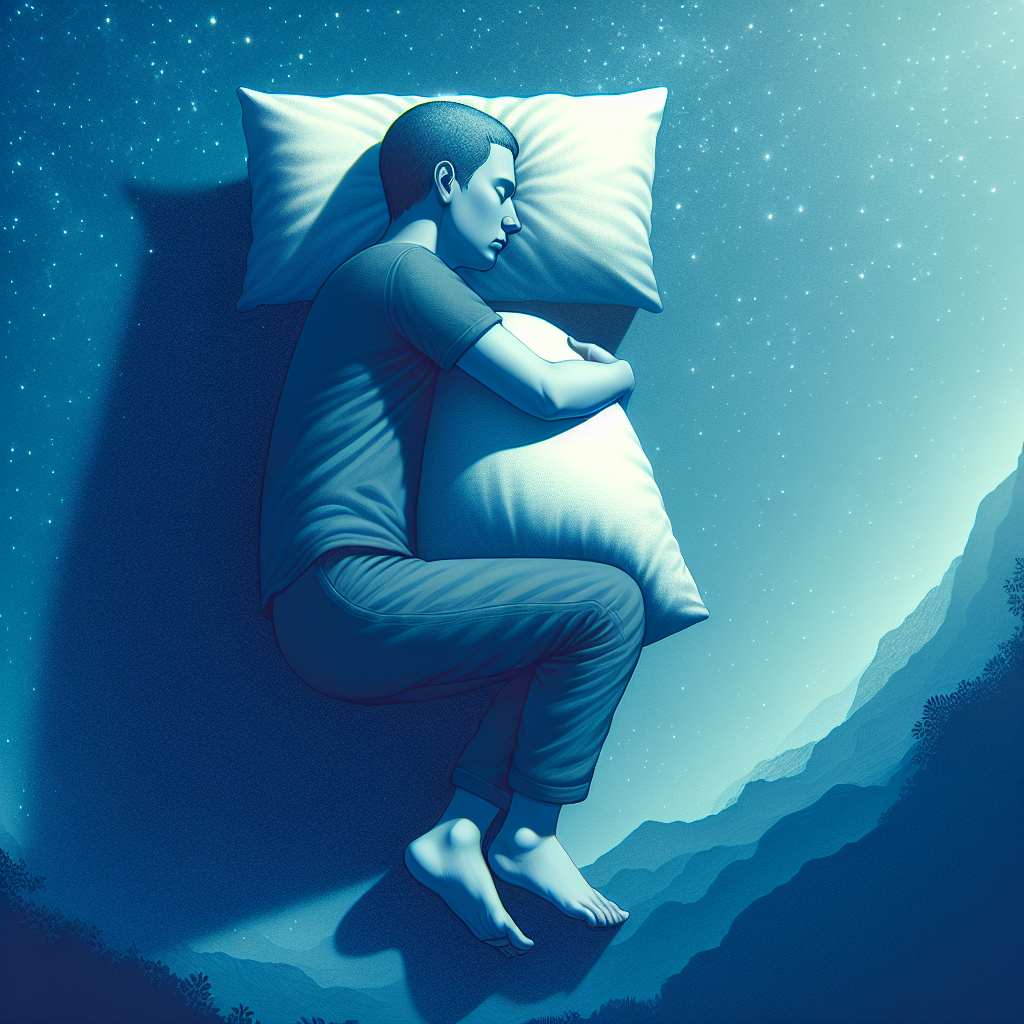
If you find yourself tossing and turning at night due to hip pain, you’re not alone. Hip pain can be incredibly uncomfortable and disruptive to your sleep. But fear not, because in this article, we will explore the best sleeping positions that can help alleviate hip pain and promote a restful night’s sleep. So, if you’re tired of waking up feeling stiff and sore, read on to discover some simple adjustments you can make to your sleeping position that may just provide the relief you’ve been longing for.

Side Sleeping Positions
Fetal position
One of the best sleeping positions for people with hip pain is the fetal position. This position involves lying on your side with your knees drawn close to your chest. By curling up in this position, you can help alleviate pressure and strain on your hips. Additionally, this position allows for better spinal alignment, reducing the risk of developing further pain and discomfort during the night.
Straight leg position
Another effective side sleeping position for individuals with hip pain is the straight leg position. In this position, you lie on your side with both legs extended straight. By keeping your legs in line with your body, you help distribute the weight evenly across your hips, reducing the strain on your affected joints. This can provide significant relief and support for individuals suffering from hip pain.
Pillow between knees position
For those experiencing hip pain, placing a pillow between your knees can offer tremendous benefits. By slipping a pillow or cushion between your knees while lying on your side, you promote proper alignment of your hips and pelvis. This helps maintain the natural curvature of your spine and reduces pressure on your hip joints. It’s important to choose a pillow that is firm enough to provide adequate support, yet still comfortable enough for a good night’s sleep.
Hugging a body pillow position
Hugging a body pillow while sleeping on your side can provide excellent support and alleviate hip pain. By hugging a large, full-length body pillow, you can help maintain proper spinal alignment, reducing strain on your hips, and promoting a more comfortable sleep. This position allows your upper leg to rest comfortably on the body pillow, easing tension and pressure on your hip joint. It’s important to choose a body pillow that is the right size and firmness for your individual needs.
Back Sleeping Positions
Pillow under knees position
For individuals experiencing hip pain, sleeping on your back with a pillow under your knees can be highly beneficial. Placing a pillow under your knees helps to maintain the natural curve of your lower back, reducing stress and pressure on your hips. This position can also help alleviate pain by evenly distributing your body weight across your mattress. It’s essential to choose a pillow that is the right height to achieve proper alignment and support for your lower back and hips.
Pillow under hips position
If you prefer sleeping on your back, placing a pillow under your hips can provide added support for your hip joints. By elevating your hips slightly, you help reduce pressure and strain on your hips, promoting a more comfortable and pain-free sleep. The pillow should be firm enough to provide adequate support and height, yet still comfortable enough to ensure a restful night’s sleep. It’s important to experiment with different pillow sizes and materials to find the one that best suits your needs.

Stomach Sleeping Positions
Pillow under the pelvis position
While sleeping on your stomach is generally not recommended for individuals with hip pain, there is a modification you can try to alleviate discomfort. Placing a pillow under your pelvis can help keep your spine in a more neutral position, reducing strain on your hips. This pillow provides support and elevation, which can alleviate pressure on your hip joints to some extent. However, it’s important to note that sleeping on your stomach can still place stress on your neck and spine, so it’s best to try alternative sleeping positions if possible.
Combination Sleeping Positions
Back and side sleeping position
Combination sleeping positions, such as alternating between back and side sleeping, can be beneficial for individuals with hip pain. By switching between these positions during the night, you avoid prolonged pressure and strain on your hips and allow for better circulation. One way to achieve this is by initially lying on your back and then rolling onto your side when you feel discomfort. This can help prevent stiffness and promote a more comfortable sleep, allowing your hip joints to rest and recover.
Prone position with leg support
For individuals who find comfort in sleeping on their stomach, the prone position with leg support can provide relief from hip pain. In this position, you lie on your stomach with a pillow or cushion placed under your lower abdomen and pelvis. This elevation helps to reduce the strain on your hip joints and promotes proper alignment of your spine. While stomach sleeping is generally not recommended, this modified position can offer some relief for those who find it difficult to break the habit.

Other Tips and Recommendations
Use of supportive mattress and pillows
Investing in a supportive mattress and pillows specifically designed for individuals with hip pain can greatly improve your sleep quality. Look for a mattress that provides adequate support and contouring for your body, relieving pressure on your hips. Similarly, choose pillows that offer proper support and alignment for your neck and spine. Memory foam or latex mattresses and pillows are often ideal choices for individuals with hip pain, as they conform to your body’s shape and provide targeted support.
Maintaining proper body alignment
Regardless of your preferred sleeping position, maintaining proper body alignment is essential for managing hip pain. Avoid slouching or bending your body unnaturally while sleeping, as this can lead to increased discomfort. Keep your body aligned by ensuring that your head, shoulders, hips, and knees are all in line with each other. This helps distribute weight evenly and reduces strain on your hips, promoting a more restful and pain-free sleep.
Physical therapy and exercises
In addition to optimizing your sleeping positions, incorporating physical therapy and exercises into your daily routine can help manage hip pain. Strengthening the muscles around your hip joints and improving flexibility can help reduce discomfort and improve overall hip function. Consult with a physical therapist or healthcare professional to develop a personalized exercise program that will target your specific needs and promote hip health.
Pain management techniques
If hip pain persists despite implementing lifestyle changes and optimizing your sleeping positions, there are various pain management techniques that can provide relief. Heat therapy, such as using a heating pad or taking warm baths, can help relax muscles and alleviate discomfort. Cold therapy, such as applying ice packs, can also help reduce inflammation and numb the area temporarily. Additionally, over-the-counter pain medications or topical creams may be recommended by your healthcare provider to manage acute or chronic hip pain. However, it’s crucial to consult with a medical professional before incorporating any pain management techniques into your routine.
In conclusion, finding the best sleeping positions for people with hip pain is crucial for promoting comfort and reducing discomfort. Experimenting with different positions, such as side sleeping with proper support or using pillows to elevate specific areas, can help alleviate pressure and strain on your hips. It’s important to listen to your body and adjust your sleeping positions accordingly, ensuring proper alignment and support for your hip joints. Additionally, incorporating other strategies such as using supportive bedding, maintaining proper body alignment, engaging in physical therapy, and utilizing pain management techniques can contribute to a more restful and pain-free sleep. Remember to consult with a healthcare professional for personalized recommendations and guidance in managing your hip pain effectively.





